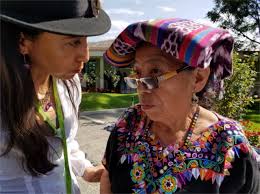Community memory and messengers

The memory and messengers of the community of Pope Francis recovered for communication to people and their memories.Published in Meeting Point
ByFranklin Cornejo Urbina1
The memory and messengers of the community of Pope Francis recover for communication to people and their memories, highlights the role of the communicator man, the person as the protagonist of communication, central subject of history, builder of history, source of stories, a subject capable of building "stories that help rediscover the roots and strength to move forward together," says Bergoglio. The narrator man and his story as the builder of human memory refers us to the process of face-to-face communication, of the “dialogue of faces”. Memory is the story of conversation with others Since the emergence of new communication technologies and the expansion of electricity service in cities, the mode of interconnection changed our way of relating, also the way of counting and preserving our memories . Those changes had the effect of new ways of seeing the world, seeing ourselves in the world and representing ourselves. If we stop at the audiovisual culture, the media evolved through the screens, to be precise on four screens (cinema, television, computer and mobile phone), screens that project new stories, narratives, behaviors, worlds and lifestyles.
Pope Francis' Message for the 54th World Day of Social Communications entitled “So that you can count and record in memory. Life becomes history ”brings to the analysis and practice of communication the theme of narration, of stories, of man and woman as narrative beings. The valuable document that they are in our closest or farthest community and that as Christians they are our brothers; there are the face-to-face conversations of men and women as creators of the symbol in the media and who use technology to leave traces or a legacy of their presence in the community. The symbol is the first cultural product of man in relation to the others, while the testimony is presented as the communicational genre almost consubstantial with the social man, addressing the others through words, gestures, codes, symbols or music. .
Community memory and feelings
Memory is the common good of men and women who have been telling stories, collecting and sharing them, recreating and transmitting them in rites, in social gatherings, in events, in ceremonies, in relevant and daily moments in the community. The testimonies in the context of daily life or through the screens have become the social representation of communication; When these representations reflect common practices and acts, they open minds and hearts to celebrate cohesion, identity and the place of memories that bring us together; then memory revitalizes community feelings. That is the memory that is celebrated with the Pope's Message, the memory of life that transcends wills, the memory that speaks and tells about the common good, the other, love and the identity of the community to build a history together. It is true that communication can only transmit messages or a lying trap when it is at the service of power, disinformation, manipulation and slander; But when mechanisms of participation, justice, the exercise of freedom, and listening are established, communication becomes the happiest experience for interlocutors and promoters of social practices in favor of the common good and diversity.
Community messengers
In light of the Message of Pope Francis that we comment on here, what can be the similarities or differences of the stories that are told from the four screens, and how does life become history or memory from these devices of modernity? A first approach to this question is that the Pope's Message refers us to man as the end of communication and not the means. The messenger man (in the community) is the bearer of stories (and memories). The historical man is in a community or in search of a community. The promoter of memories is a messenger, narrator, dialoguer; it comes from a community and it goes towards a community. He is the messenger of a community. The media man and the social man, the man in the public sphere and the man in the digital sphere. The man of the instruments and the man of the experiences. Both subjects appear in different situations, but they are related -from our reading- to conceptual frameworks and attitudes that recreate communication from a we where the others are included. Dichotomies can be useful for analysis, but not on a practical level, because they do not allow to build from a horizontal perspective, because they do not promote meeting, exchange. If the approach is not articulated with the ethical position and the desire to generate change, a dynamic process of communication to strengthen community, peace and encounter, it will be difficult to establish actions in favor of human communication. There is a splendid metaphor that secularly expresses what unites us, the metaphor of the face. Italo Mancini, in his book “The faces return” (in Italian “Tornino i volti”, Genoa, 1989) 2, says that “our world to live, love and sanctify it, does not appear from a theory of being, it is not presented by the events of history or by the phenomena of nature; it arises from the existence of unheard-of centers of otherness that are the faces of people, faces to look at, to respect, to caress ”. Mancini continues: “The coexistence of faces results in the love of neighbor and in diluting the self, to understand this coexistence as a homeland: the homeland of peace. The name that is the oldest, is not the being, it is not the self, it is not the knowing, but it is the other, the neighbor ”.
Screens to see and find us
The screens of the cinema, television, computer and mobile telephony have become the scenes of the representation of life and of the history of the life of the human being. The first two screens appeared for the general public, the massive and the collective, for the audience and the audience. The other two screens were created to facilitate interaction from the technologies. The first large-screen movie screen was installed in a room, while its newest version, the hand-sized mobile phone screen, has been created to be portable. About 106 years separate the first film projection of 1895 with the commercial launch in 2001 of 3G mobile telephony. The screen always attracted attention; the history of the screens is itself a memory of cultural changes. The first investigations seek to understand the cinema screen, that luminous rectangle that turns on and off in the urban society of electricity with resources to buy a ticket to go to the cinema or who has purchasing power to buy a television. The television, from being an artifact that united the family, became, over time, in modern urban areas, an artifact of frequent use in “a privacy flooded with light” (Silverstone, 1996) 3 . In popular contexts, television is the medium of company, where they watch soap operas and action films or have the television screen as a “companion” or reference point during street sales and street experiences, where impoverished migrant children and adults They wander on public roads selling things or living there for lack of opportunities in the metropolis. Despite the fact that radio already existed, the first research in financed communication was on cinema. In the interconnection, in the need of contact for business and commerce, the means of communication emerged where the behaviors and attitudes of people in different situations were staged. Consider one of the first milestones in media and communication research 5 ; There we will find research on the Payne Foundation (1933-1935), which dealt with the effects of commercial cinema as a means of entertainment for children and adolescents. According to the Payne Foundation, a large part of the films of that time had love, crime and sex as central themes. The first screen the world saw projected those themes. And one of the first investigations on the relationship between communication and media was on cinema and children. Other works on cinema were "The filmic experiments with American soldiers" (1949) and "Language and cinema" (1971).
The first studies on television are the works: "Television in the lives of our children" (1961), research on the effects of television on children, the media and violence, "TV: technology and cultural form" ( 1974). But in those years between the fifties and seventies other key works appeared that allow us to understand communication from the public's perspective: "Personal influence" (Lazarfeld and Katz, 1955), the "Coding and decoding model of communication in the discourse of television ”(Hall, 1973) and“ Theory of uses and gratifications ”(Jay G. Blumler Katz, 1974). At the beginning of the eighties, what is considered one of the pioneering books of communication studies in our region, “From the media to mediations” (Jesús Martín Barbero, 1987) was published in Latin America.
We attend cultural changes; The new screens of the computer and mobile telephony are now associated "to read, write and converse" (Albarello, 2019), but it is there, in this transmedia interaction, that something in particular occurs with the use of mobile phones , where unlimited and potential spaces appear, to reveal aspects of personal and institutional life, which allow to generate and recreate virtual communities; where participation, listening, writing, expression, dissent, diversity are experiences facilitated by reality TV and telecommunications. The challenge is to understand how in these multiple screens and multiple connections we can find people who build common memories in relation and give them a sense of shared life with others. In connection, social contact is maintained, but how much truth and humanity can there be between a click, a video call, a videoconference, in a mediated conversation that raises need, emotion or reason to build the culture of memory? The answer will always go through a human experience, be it telemediated or face-to-face. Memory, memories, travel in the culture of face-to-face communication, but are projected in symbolism and technological connection, where publishers, producers and Internet users -that is what is expected- can tell stories to strengthen memories of the life and community from which we come and to the communities towards which we project ourselves as social subjects.
1 Doctor in Social Communication from the Pontifical Gregorian University in Rome. He currently works as a teacher at the School of Journalism of the Antonio Ruiz de Montoya University (Lima, Peru).
2 Excerpt from the work of Italo Mancini "Tornino i volti" http: //imensionesperanza. it / dossier-speranza / item / 542-tornino-i-volti-italo- mancini.html
3 Roger Silverstone (1996) Television and daily life. Buenos Aires: Amorrortu. "Street audiences" (Cornejo, 2008)
4 Franklin Cornejo (2008) "Street audiences" between markets, streets and music in Peru in Perspectives of communication. Chile: Universidad de la Frontera.
5 On the “milestones of media and communication research” I refer to review the work of Klaus Bruhn Jensen (2014) Communication and the media: Qualitative and quantitative research methodologies. Mexico: Fund
6 Francisco Albarello (2019) Transmedia reading. Read, write, converse in the ecosystem of screens. Buenos Aires: Ampersand.






